SSC CGL - Detailed Guide 2025
Self-Paced Course

Revolutionary Activities (Indian Freedom)
Reference: Lucent GK, NCERT Class 6–12
1. Early Revolutionary Activities (Before WWI)
- Chapekar Brothers (1897)
• Assassinated British plague commissioner Rand in Pune
• First political assassination in modern India
• Leaders: Damodar, Balakrishna, and Vasudev Chapekar - Anushilan Samiti (1902)
• Founded in Bengal
• Leaders: Barindra Ghosh, Aurobindo Ghosh
• Trained youth in physical fitness and arms - Abhinav Bharat Society (1904)
• Founded by V.D. Savarkar and Ganesh Savarkar
• Located in Maharashtra
• Secret society advocating armed struggle
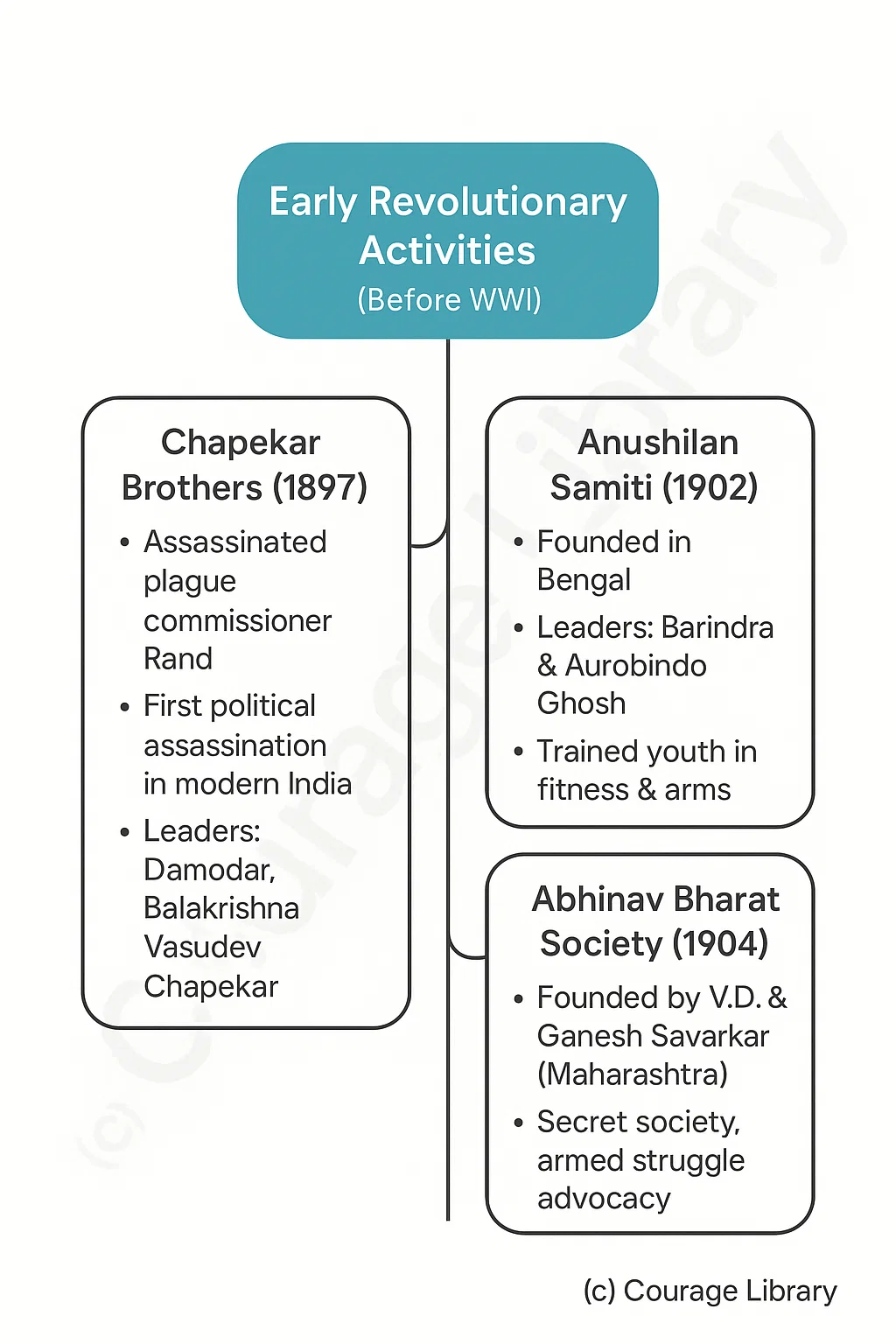
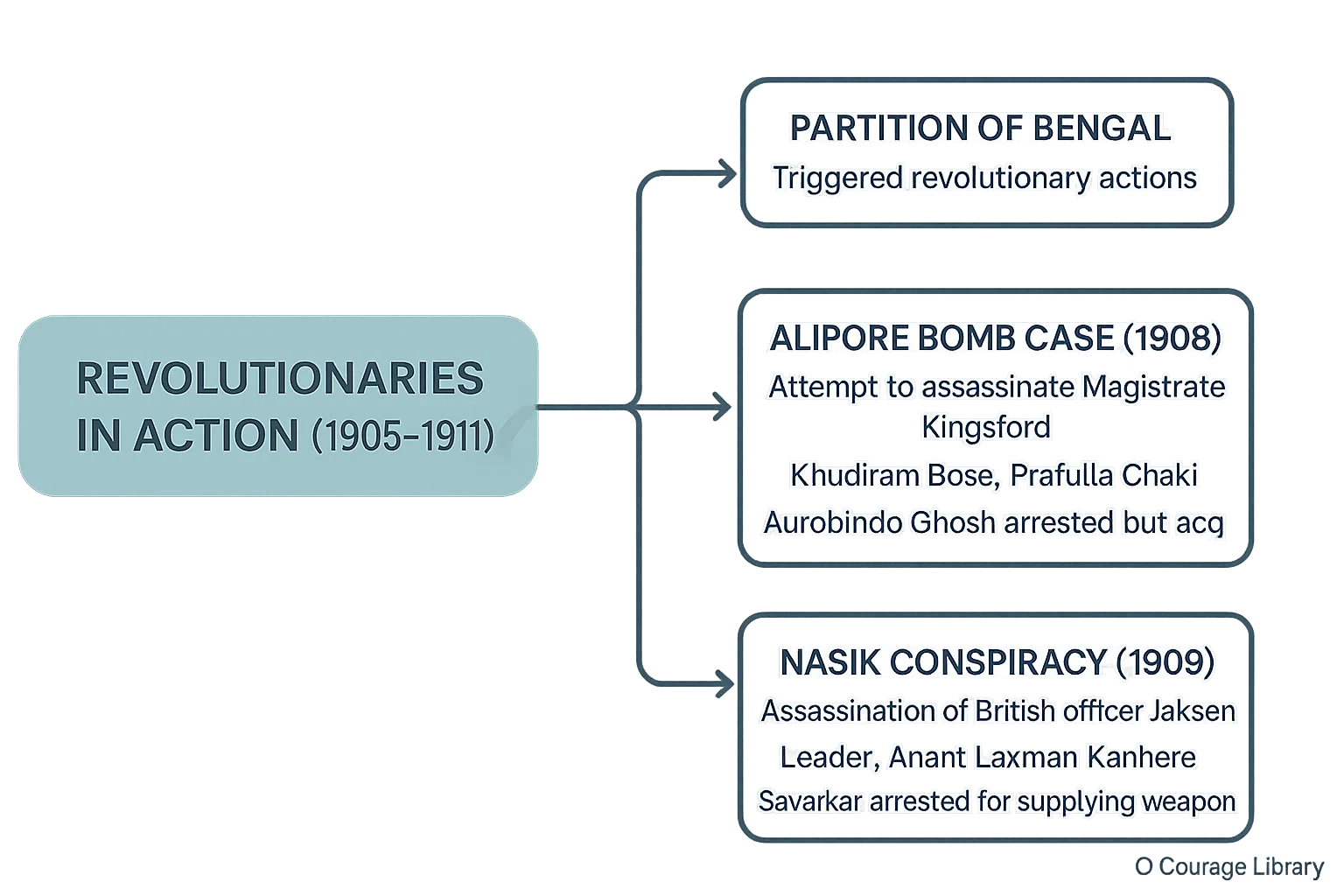
2. Revolutionaries in Action (1905–1911)
- Partition of Bengal (1905) → Triggered revolutionary actions
- Alipore Bomb Case (1908)
• Attempt to assassinate Magistrate Kingsford in Muzaffarpur
• Khudiram Bose (hanged at 18), Prafulla Chaki (suicide)
• Aurobindo Ghosh was arrested but acquitted - Nasik Conspiracy (1909)
• Assassination of British officer Jackson
• Leader: Anant Laxman Kanhere
• Savarkar arrested for supplying weapon
3. Indian Revolutionaries Abroad
- India House (London)
• Leader: Shyamji Krishna Varma
• Members: V.D. Savarkar, Madan Lal Dhingra
• Dhingra assassinated Curzon Wyllie (1909) → executed - Ghadar Movement (1913)
• Formed by Indian immigrants in USA & Canada
• Leaders: Lala Hardayal, Ram Chandra
• Aim: Armed revolt in India (failed due to British intel)
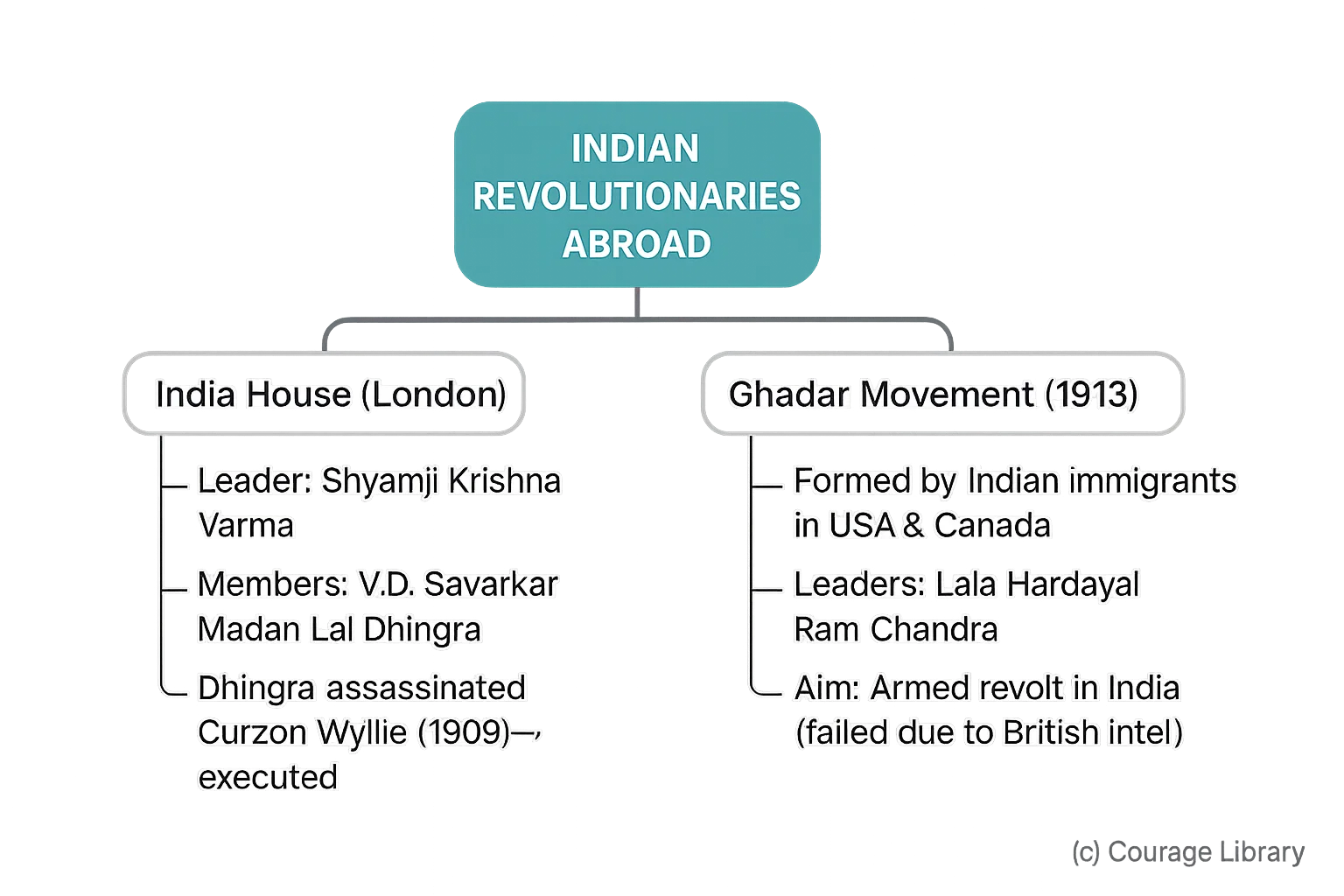
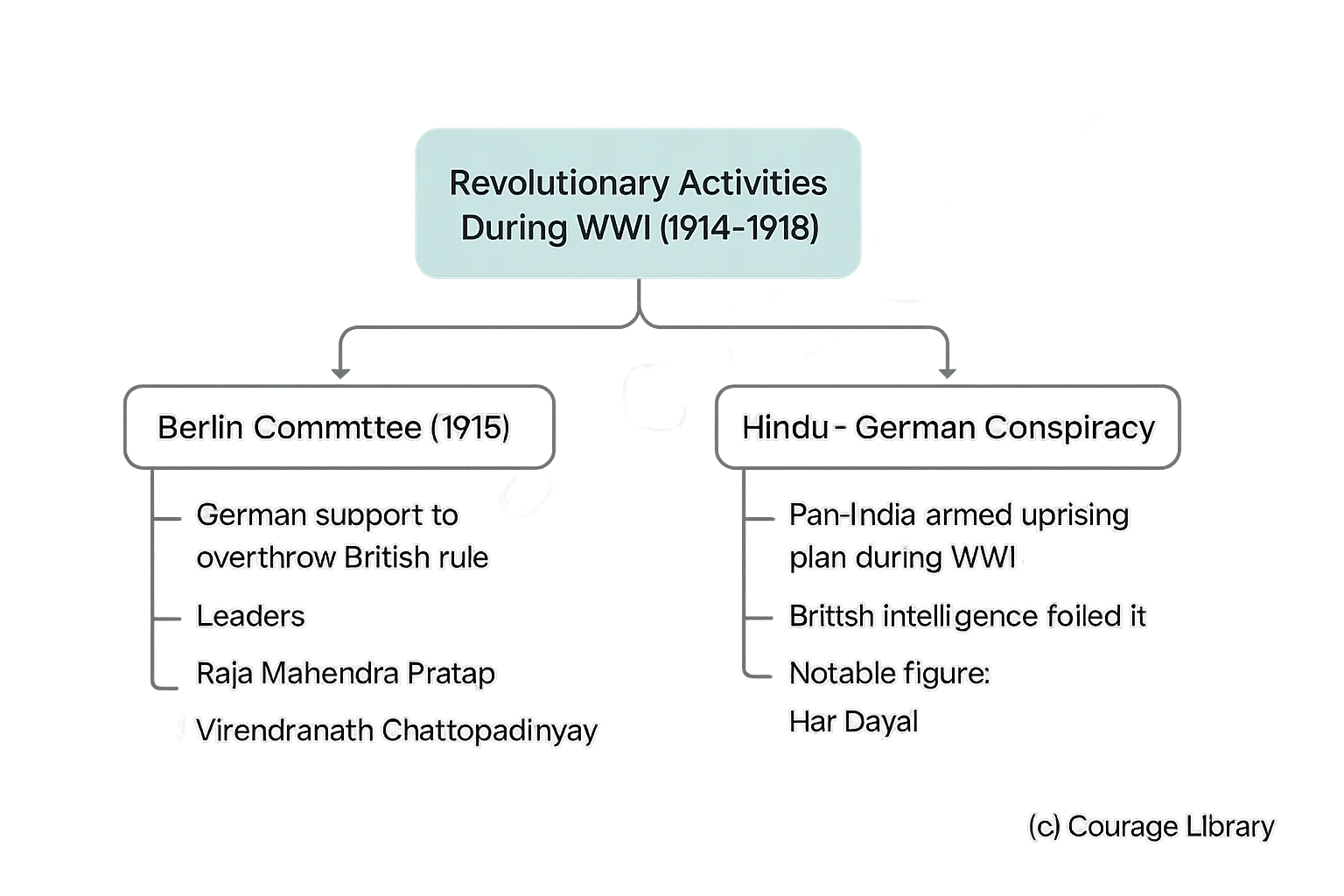
4. Revolutionary Activities During WWI (1914–1918)
- Berlin Committee (1915)
• Objective: German support to overthrow British rule
• Leaders: Raja Mahendra Pratap, Virendranath Chattopadhyay - Hindu–German Conspiracy
• Pan-India armed uprising plan during WWI
• British intelligence foiled it
• Notable figure: Har Dayal
5. Post-WWI Revolutionary Resurgence (1919–1934)
- Kakori Conspiracy (1925)
• Train robbery in UP
• Leaders: Ram Prasad Bismil, Ashfaqulla Khan, Azad
• Bismil & Ashfaqulla hanged - HSRA Formed (1928)
• Hindustan Socialist Republican Association
• Leaders: Azad, Bhagat Singh, Rajguru, Sukhdev - Lahore Conspiracy Case (1928)
• Assassination of J.P. Saunders
• Bhagat Singh, Rajguru, Sukhdev hanged (1931) - Assembly Bomb Case (1929)
• Bhagat Singh & Batukeshwar Dutt protested in Delhi Assembly
• No casualties, slogan: “Inquilab Zindabad” - Death of Chandrashekhar Azad (1931)
• Died in Alfred Park, Allahabad (chose suicide over arrest)
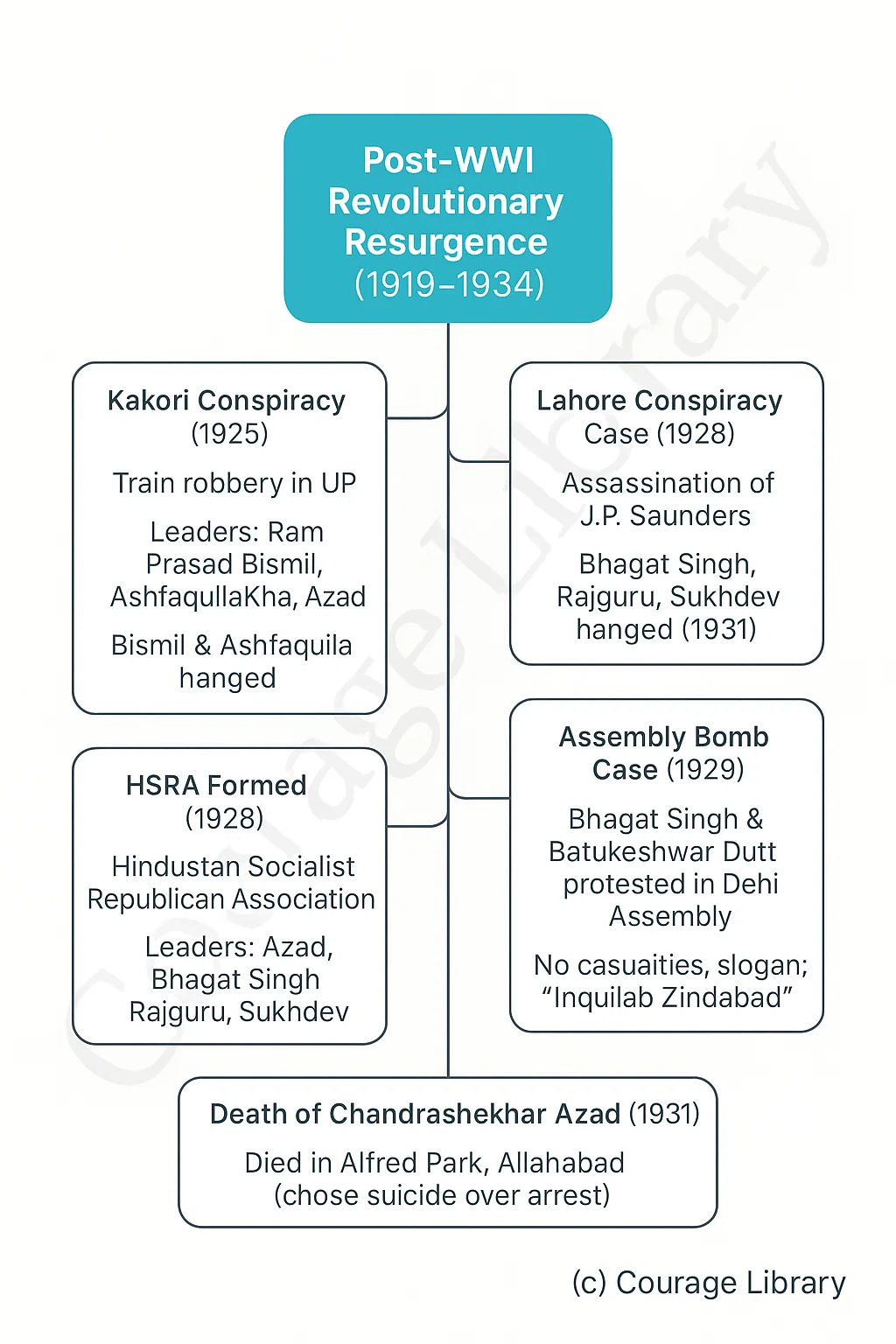

6. Other Notable Revolutionary Movements
- Chittagong Armoury Raid (1930)
• Leader: Surya Sen
• Aim: Seize armoury in Chittagong
• Participants: Kalpana Dutta, Pritilata Waddedar - Pritilata Waddedar
• Female revolutionary
• Attacked European club (sign: “Dogs and Indians not allowed”)
• Committed suicide to avoid capture
Quick Revision Table
| Event | Year | Leaders | Significance |
|---|---|---|---|
| Chapekar Brothers | 1897 | Damodar, Vasudev | Killed Rand (Plague Commissioner) |
| Alipore Bomb Case | 1908 | Khudiram, Prafulla | Attempt to kill Kingsford |
| India House | 1905 | Shyamji Krishna Varma | Revolutionaries abroad |
| Kakori Conspiracy | 1925 | Bismil, Ashfaqulla | Train robbery, execution |
| Lahore Conspiracy | 1928 | Bhagat Singh, Rajguru | Killed Saunders |
| Assembly Bombing | 1929 | Bhagat Singh, B.K. Dutt | Protest against repressive laws |
| Chittagong Raid | 1930 | Surya Sen | Attempt to free Chittagong |
| Death of Azad | 1931 | C. Azad | Martyred in Alfred Park |
Developed By Jan Mohammad
Next
Start Your SSC CGL Journey Now!
Join Courage Library to experience disciplined study and expert support.
Be a Couragian!